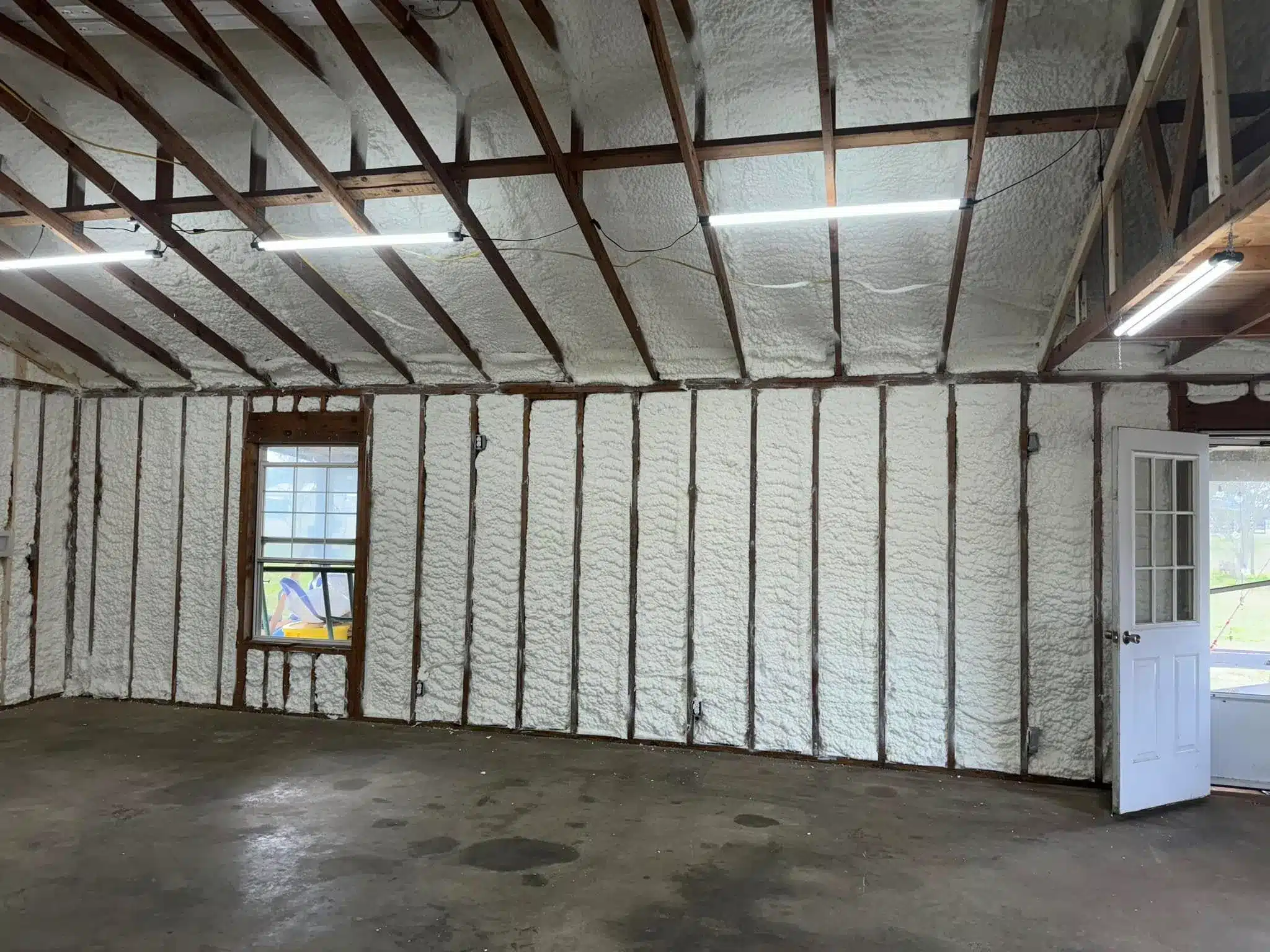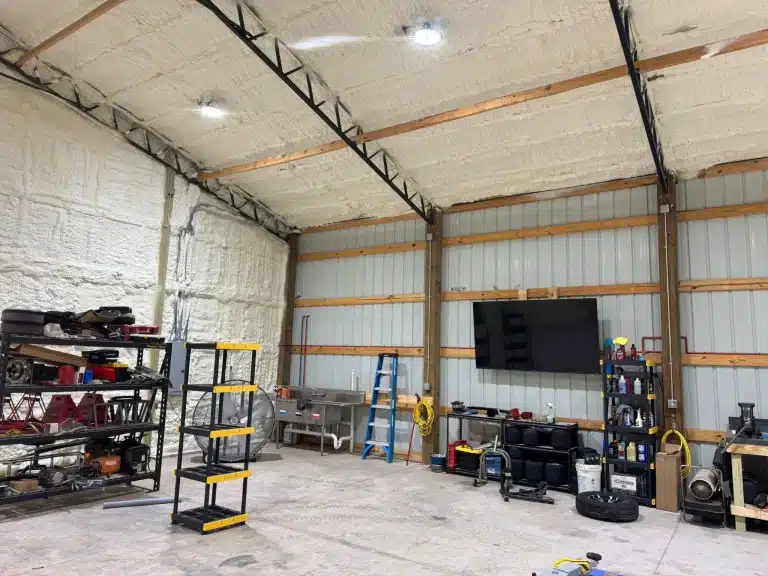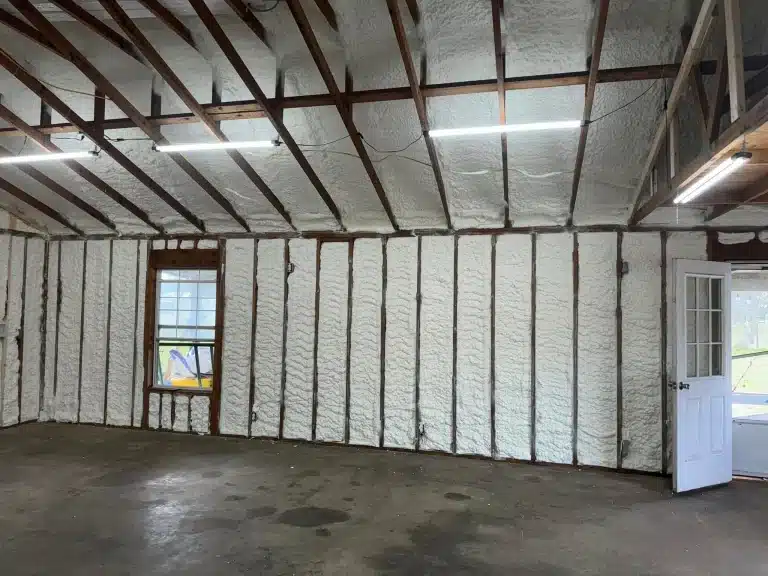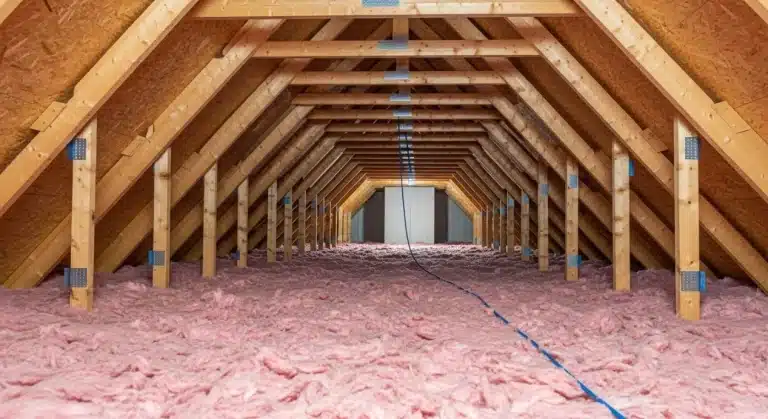Spray foam insulation’s reliability in extreme weather stems directly from its unique properties as a rigid, seamless, and powerful sealant. For homes in East Hill and the greater Pensacola area, this translates into a formidable defense against hurricane-force winds, torrential rain, and oppressive humidity. Unlike traditional insulation materials that can sag, settle, or absorb moisture, closed-cell spray foam cures into a solid, water-resistant barrier that bonds directly to the structure. This monolithic seal not only provides a high R-value but also adds significant structural strength and prevents the air and moisture infiltration that defines so many weather-related home failures.
This article explores the specific characteristics of spray foam that make it a superior choice for the demanding coastal Florida climate. The information here is based on years of direct experience insulating homes throughout the Gulf Coast, providing a practical understanding of how different materials perform under real-world stress.
How Spray Foam Fortifies a Home’s Structure
One of the least understood benefits of closed-cell spray foam is its ability to reinforce the building itself. When applied, the foam expands and hardens, acting like a high-strength glue that bonds studs, sheathing, and other structural components together. This creates a much stiffer and more resilient building envelope.
Research confirms this effect. A technical bulletin from the Spray Polyurethane Foam Alliance explains that closed-cell spray foam can significantly increase a wall assembly’s resistance to racking forces, which are the lateral pressures exerted by high winds during a hurricane. By making the entire structure more rigid, the home is better equipped to withstand the intense, shifting pressures of a major storm without catastrophic failure of the roof or walls.
Wind Uplift and Roof Deck Adhesion
In Pensacola, hurricane winds pose a major threat to roof integrity. Wind moving over a roof creates a powerful uplift force that can rip shingles and sheathing right off the rafters. When closed-cell spray foam is applied directly to the underside of the roof deck, it creates a powerful bond between the sheathing and the roof trusses or rafters. This adhesion can increase a roof’s resistance to wind uplift by a factor of two or three, effectively locking the roof down and preventing the catastrophic chain of events that begins when a roof is breached.
Bonus Tip: Applying spray foam to the underside of the roof deck in the attic not only strengthens the roof but also creates an unvented or conditioned attic space. This keeps the attic much cooler and drier, extending the life of the roof and any HVAC equipment located there.
A Superior Barrier Against Humidity and Water Intrusion
Beyond its structural benefits, spray foam also provides a superior barrier against moisture, a constant battle in coastal Florida. High humidity can lead to mold, mildew, and wood rot, while heavy, wind-driven rain can find its way into the smallest cracks. Closed-cell spray foam is an excellent solution because it functions as both an air barrier and a vapor barrier.
According to the U.S. Department of Energy, closed-cell spray foam has a very low vapor permeance, which means water vapor has an extremely difficult time passing through it. This prevents the humid outdoor air from infiltrating the wall cavity and condensing, which is a common cause of hidden moisture damage and mold growth.
In cases of minor flooding, its performance is even more distinct. Materials like fiberglass or cellulose will absorb water, lose all insulating properties, and require complete replacement. Closed-cell spray foam is a non-absorbent plastic and, as recognized by FEMA, is considered a flood-resistant material. It can be washed and sanitized after a flood event without needing to be torn out, saving homeowners significant time and money on repairs.
Insulation Performance Comparison
The effectiveness of insulation is not just about its R-value. In a humid and stormy climate, its ability to manage air and moisture is equally important. Here’s how spray foam compares to other common materials.
| Feature | Closed-Cell Spray Foam | Fiberglass Batts | Blown-In Cellulose |
|---|---|---|---|
| Typical R-Value | R-6.5 to R-7 per inch | R-3.1 to R-3.8 per inch | R-3.2 to R-3.8 per inch |
| Air Barrier | Yes (monolithic seal) | No (air passes through) | No (air can pass through) |
| Vapor Barrier | Yes (low permeance) | No (requires separate barrier) | No (requires separate barrier) |
| Moisture Resistance | Impermeable to water | Absorbs water, loses R-value | Absorbs water, can slump |
| Structural Benefit | Yes (adds racking strength) | No | No |
This table shows that while all materials provide insulation, only closed-cell spray foam offers a complete air, moisture, and thermal barrier in a single application, along with structural benefits.
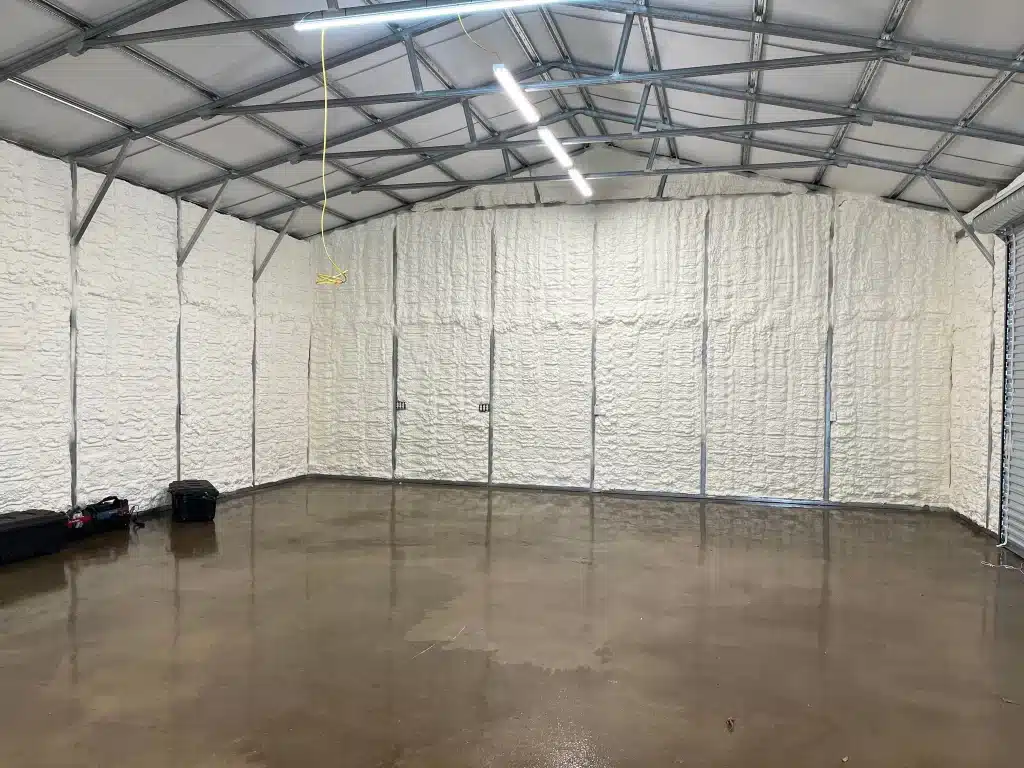
Things to Consider Before Making a Decision
While spray foam offers many advantages, there are important factors to weigh before choosing it for your home.
- Professional Installation is Non-Negotiable: The performance of spray foam is entirely dependent on proper installation. The chemical ratio, temperature, and application technique must be precise. An inexperienced installer can create a poor-quality foam that doesn’t cure correctly, has a bad odor, or fails to adhere properly.
- Building Ventilation Needs: Because spray foam creates such an airtight seal, your home’s ventilation must be addressed. A tightly sealed home may require a mechanical ventilation system, like an Energy Recovery Ventilator (ERV), to ensure a healthy exchange of fresh air.
- Initial Investment: Spray foam insulation is a premium product with a higher upfront cost compared to traditional materials like fiberglass. This cost should be weighed against long-term energy savings, improved durability, and potentially lower insurance premiums.
Bonus Tip: Before committing, request an energy audit. An audit can help identify the most significant sources of air leakage and thermal loss in your home, ensuring that you are investing in a solution that addresses your property’s specific weaknesses.
Final Considerations
For homeowners in East Hill, Pensacola, selecting an insulation material that can stand up to extreme weather is a serious decision. Spray foam insulation provides a unique combination of high thermal resistance, structural reinforcement, and superior moisture control in a single product. These qualities make it an exceptionally reliable choice for a region that regularly faces hurricanes, tropical storms, and intense humidity. Evaluating your home’s specific vulnerabilities and long-term resilience goals is the first step toward making a sound investment in its protection.
Get a Professional Assessment
Choosing the right insulation requires a detailed look at your home’s construction and specific needs. For a thorough evaluation and to discuss if spray foam is the right solution for your property, contact the team at Prestige Insulation Solutions LLC. You can reach the office by calling (850) 429-4969 or sending an email to [email protected] to schedule a consultation. An expert can provide a clear path forward based on the unique demands of our coastal climate.
Sources
U.S. Department of Energy – This consumer-facing resource from the DOE explains the different types of insulation, including the air and vapor barrier characteristics of spray foam.
FEMA– This guide from the Federal Emergency Management Agency discusses flood-resistant materials and lists spray foam as a suitable choice for insulation in flood-prone areas.
Spray Polyurethane Foam Alliance – This technical document from the primary trade association for spray foam provides details on its physical properties, including its ability to add structural strength.
Frequently Asked Questions
How does spray foam help with hurricane preparedness?
By adding structural rigidity to walls and creating a powerful bond that holds the roof deck down, spray foam makes the entire building envelope more resistant to the forces of hurricane winds. Its water resistance also helps minimize damage from wind-driven rain.
What is the lifespan of spray foam insulation?
When installed correctly, spray foam is a highly durable and chemically stable material designed to last for the life of the home. It does not sag, shrink, settle, or break down, ensuring its thermal and physical properties remain effective without needing replacement.
Can it be used in historic homes in East Hill?
Yes, spray foam is often an excellent choice for older homes. It can be used to insulate irregular or hard-to-reach spaces without requiring significant demolition. It also helps to control air drafts common in older construction. However, care must be taken to manage moisture and ventilation properly in these structures.
Can spray foam be installed in an existing home?
Yes, spray foam can be retrofitted into existing homes. It can be injected into wall cavities or applied to open surfaces like attic floors, the underside of roofs, and crawl spaces. The process is adaptable to many different types of construction.
Does spray foam help reduce outside noise?
Both open-cell and closed-cell spray foam have excellent sound-dampening properties. The dense, airtight seal is very effective at blocking airborne sound, which can create a much quieter indoor environment, a noticeable benefit in busy neighborhoods or during storms.


